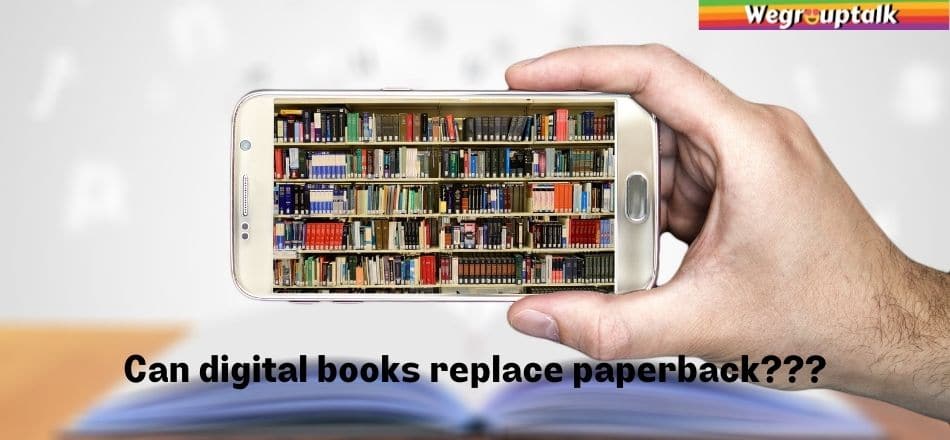Today, everybody is moving towards e-learning, with students taking the responsibility of education on their shoulders. Now they have lots of options to use different formats of learning. Technology assists in the process of innovation in education. There are lots of ways how to teach the same content to students. The textual content can show through videos in the form of documentaries and motion pictures. Videos also assist the process of learning even more as they help in registering better information. Many classrooms also adopted the use of podcasts to insert the textual learning process. The Audio and visual modes of communication help in better retention of complex subjects

The Government of India is stimulating several e-learning projects under the National Mission on Education through ICT initiatives such as the National digital library, Swayam-Prabha, e-Yantra, Virtual Lab. These are helping students and teachers in upskilling and providing them with good and quality resources. These efforts lead to creating knowledge tools that encourage creativity and innovation, particularly among young students.
The New Education Policy, which came in 2020, replaces the earlier policy introduced 34 years ago. It changes the education system and focuses a great deal on technology. NEP grants that India is a global leader in information and communication technology and other cutting-edge domains, such as space. The Digital India campaign helps to transform the entire nation into a digitally empowered society and knowledge economy. Education will also play an essential role in this transformation, technology itself, and educational processes’ improvement.
NEP provides a platform for a free exchange of ideas and technology to enhance learning, assessment, planning, and administration. It is applicable both for school and higher education in India. The government will also create the National Research Foundation (NRF) to initiate and expand research-based technology efforts.
The Covid-19 pandemic shutdown directly affected the school and learning, including teaching and assessment methodologies. However, the gap was filled by e-learning as schools, colleges, and educational institutions quickly shifted teaching and learning online.
While e-learning has been overgrowing in past years, India is now witnessing switches in e-learning since the pandemic emerged. Top universities and higher education institutions have partially or fully shifted to the online teaching model, reporting considerable success in their venture.

People were spending more time at home than ever before; digital learning has emerged as a necessary education resource. This pandemic has transformed the old chalk-talk teaching model into one driven by technology. There is a lot of improvement that can be done in virtual coaching platforms and online education in terms of the better connection between students and teachers, like in physical classrooms.
The e-learning experience so far has thrown up some issues and directions for the future of online education. E-learning needs to get more creative; The effort should be to take out the school environment’s best and improve it by using technology’s power. Regulate the laboratory classes in a remote area; there is a need to create and install a toolbox of online, virtual, and remote labs that can easily use in different courses to bridge this gap.
Advantages of online education:
Quickly Learn from anywhere
With the trend of online education, which only requires a laptop or a smartphone and an internet connection, the students can learn anywhere regardless of the time boundaries. This type of flexibility helps s and helps working professionals pursue new courses without creating barriers in their professional lives. They can either learn on weekends or during their free time.
Money and time saving
E-education is much more cost-effective than regularly going to campus for their education. It is beneficial to the students who cannot afford a regular college to accomplish their dream. Anyone can study at their own time, and it helps to save time as well.

Learn at your own pace
Everyone tends to learn at their own pace. Many students are taught together in a classroom, and many students find it challenging to grab the teachings. This is a significant disadvantage of the traditional education teaching method. Online education resolves this problem. With online education, all the course materials are provided easily .student can learn it by taking their own time. Also, Students can clarify their doubts through live chats or forums as well.
Disadvantages of online learning:
Distraction
In online education, there are high chances of distraction in the students. Students can quickly get off from their learning, and there is nobody to remind you of time and again about your classes, assignments, and other things. You are all on your own. You will have no friends to remind you about your homework things have to be done independently all by yourself.

Fraudulent online courses
Not everything you get online in the form of education is trustworthy. You have to distinguish the differences between right and wrong. Many websites offer online courses that providing any accreditation to an educational body. Also, some give a course in the name of fake authorities. Children should consider the highly reputed and advisable one by their parent’s other cybercrime in another insect-eating all the insides of the internet with the digitization becoming more popular.
Restricts to do courses that require labs and workshops
The most significant example is you cannot do an engineering course as it also requires lab work. Also, in systems like MBA, you need networking or overseas experience, which cannot happen online.
Obstructs socializing
Online is just a single person in a room attending classes, while the concept of classrooms helps you socialize with friends, teachers, have extracurricular activities like sports games. Online classes can be an obstacle and can also limit you from networking with your friends.
Technology has changed the way of our lives. With many new technologies coming in and the Zen Z generation becoming more comfortable with these tech items, it is taking ample space in all sectors. In which education has become a major one. A huge difference was made by the shift of online classes due to the COVID-19 pandemic.

This new technology-friendly education will help students have a hand in the latest opportunities and unique learning experiences. But the primary question is what is bringing this wave in technology; let us look at some things that have changed the way education used to be in the earlier days.
Following are the trendsetters:
- Digital books: The use of digital textbooks has bought a more significant change in the higher education trends. Learning and grabbing things from the readers would be soon outdated and will not please the students anymore. Digital books are making their space as they are more engaging. The plain textbooks need revision after a few years, and with this, they are becoming more expensive. This also obstructs children from having the latest information as the new version comes out after a few years, which the introductory textbooks will not have if there is a sudden change in the syllabus. They will eventually take time to upgrade, and children will lack that information. The new digital tablets coming in are cost-efficient and can also help the students access the latest data.

2. Multisensory classrooms: The interactive whiteboards in classrooms are another way to make the student’s sessions more engaging and interactive. It is a more innovative way to make students learn things quickly to grab them fast and engage with them at their best. They support visuals, kinesthetic, and auditory learning styles. This eventually improves learning outcomes. The challenging and complex concepts can be easily taught using interactive backboards while engaging with the class.
3. Remote learning: Virtual classrooms have spread their wings to places where students are bound to have an education. Students can access education irrespective of time and distance, bringing India closer to being a country where education will benefit all. The students can be taught through multiple methods like video conferencing, pre-recorded videos, classroom forums, and other things. The concept of remote learning is a boon for students who do not have access to education.
4. Interactive gamification: This concept is to make classroom learning more effective and fun. The teaching is in the style of a game. Interactive things will allow students to take their education to the next level. The video content can be made more engaging by adding gamification to it. The process of learning will become easier for students through this concept. The idea is to have sessions give away rewards and take challenges. The idea is about challenging students to come out with the most favorable results and then rewarding them and then again challenging.
5. Virtual reality: VR seems like an altogether different world to the students. It looks like everything is happening in front of their eyes. e.g. if the students are taught about the concept of space through VR, they can feel like they are learning it practically being in the space. This experience creates more curiosity in the children to learn from the classrooms.
6. Blockchain technology: The use of blockchain technology allows the collect distributed information in a database. There are other uses of blockchain technology, like in the examination evaluation, verification of student’s credentials, verification of certificates, etc. They help in evaluating the learning behavior of children. It is also supporting the teachers to provide the students with appropriate feedback.

FOLLOW US ON TWITTER, FACEBOOK, AND INSTAGRAM
ALSO READ: Top 10 coding languages to learn in 2021




